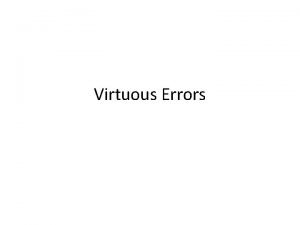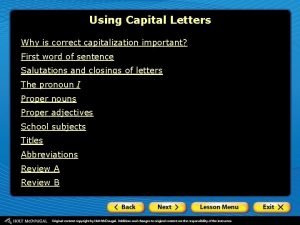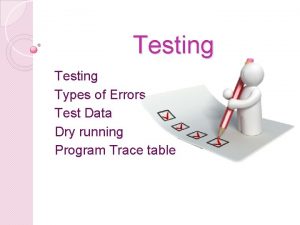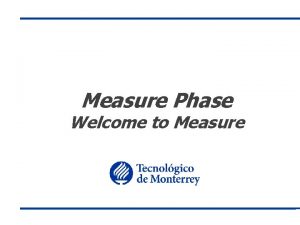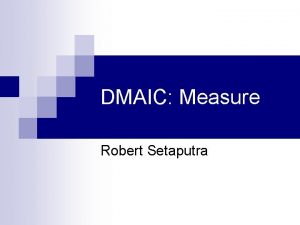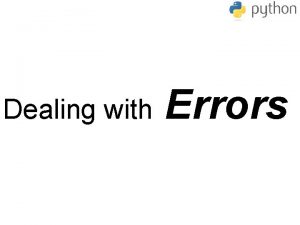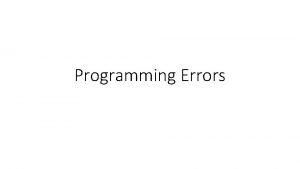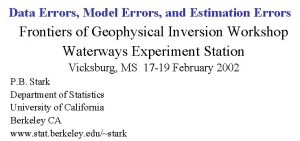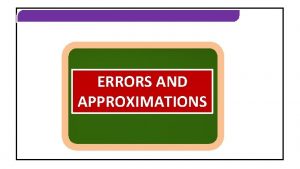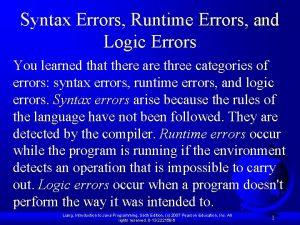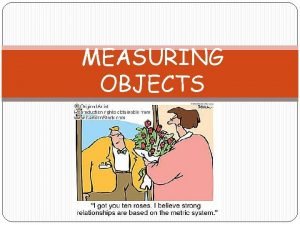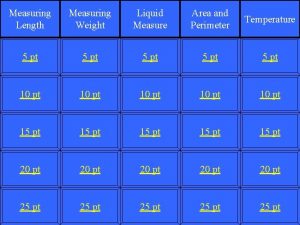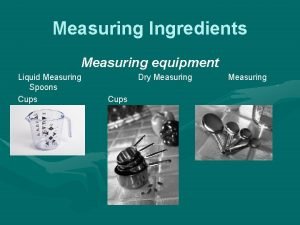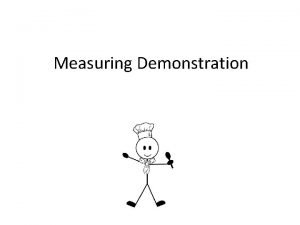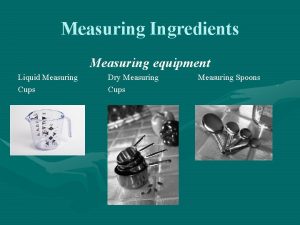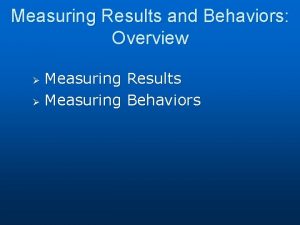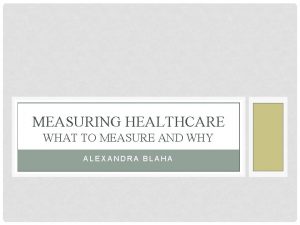1 2 Measuring Errors Why measure errors 1

















- Slides: 17

1. 2. Measuring Errors

Why measure errors? 1) To determine the accuracy of numerical results. 2) To develop stopping criteria for iterative algorithms. 2

True Error n Defined as obsolute of the difference between the true value in a calculation and the approximate value found using a numerical method. True Error = │True Value – Approximate Value│ 3

Example—True Error The derivative, of a function approximated by the equation, If 4 and a) Find the approximate value of b) True value of c) True error for part (a) can be

Example (cont. ) Solution: a) For 5 and

Example (cont. ) Solution: b) The exact value of can be found by using our knowledge of differential calculus. So the true value of is True error is calculated as │True Value – Approximate Value│ 6

Relative True Error n Defined as the ratio between the true error, and the true value. Relative True Error ( 7 )= True Error True Value lmethods. eng. usf. edu ht

Example—Relative True Error Following from the previous example for true error, find the relative true error for at with From the previous example, Relative True Error is defined as as a percentage, 8 lmethods. eng. usf. edu ht

Approximate Error n n What can be done if true values are not known or are very difficult to obtain? Approximate error is defined as the difference between the present approximation and the previous approximation. Approximate Error ( 9 ) = Present Approximation – Previous Approximation lmethods. eng. usf. edu ht

Example—Approximate Error For at find the following, a) using b) using c) approximate error for the value of Solution: a) For and 10 for part b) lmethods. eng. usf. edu ht

Example (cont. ) Solution: (cont. ) b) For 11 and lmethods. eng. usf. edu ht

Example (cont. ) Solution: (cont. ) c) So the approximate error, is │Present Approximation – Previous Approximation│ 12 lmethods. eng. usf. edu ht

Relative Approximate Error n Defined as the ratio between the approximate error and the present approximation. Relative Approximate Error ( ) = 13 Approximate Error Present Approximation

Example—Relative Approximate Error For at , find the relative approximate error using values from and Solution: From Example 3, the approximate value of using and using Present Approximation – Previous Approximation 14

Example (cont. ) Solution: (cont. ) Approximate Error Present Approximation as a percentage, 15

How is Absolute Relative Error used as a stopping criterion? If where is a pre-specified tolerance, then no further iterations are necessary and the process is stopped. If at least m significant digits are required to be correct in the final answer, then 16

Table of Values For 17 at with varying step size, 0. 3 10. 263 N/A 0 0. 15 9. 8800 0. 038765% 3 0. 10 9. 7558 0. 012731% 3 0. 01 9. 5378 0. 024953% 3 0. 001 9. 5164 0. 002248% 4
 Hey hey bye bye
Hey hey bye bye Gibbons jacobean city comedy download
Gibbons jacobean city comedy download Barometer
Barometer Dont ask
Dont ask Why is mass more useful than weight for measuring matter
Why is mass more useful than weight for measuring matter Why-why analysis
Why-why analysis Willie twister
Willie twister Does this table represent a function why or why not
Does this table represent a function why or why not Does the table represent a function why or why not
Does the table represent a function why or why not Why or why not
Why or why not Why why analysis
Why why analysis Errors and suspense
Errors and suspense Virtuous errors meaning
Virtuous errors meaning Sincerely yours capitalized
Sincerely yours capitalized Pregnancy test keeps saying error
Pregnancy test keeps saying error Correction of errors
Correction of errors Dry run testing
Dry run testing Off center grid
Off center grid












